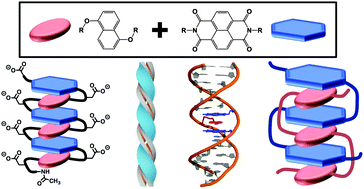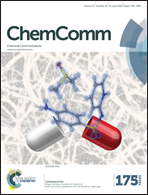Exploiting the interactions of aromatic units for folding and assembly in aqueous environments
Abstract
A variety of non-covalent interactions (including hydrogen bonding, ionic interactions, metal coordination and desolvation/solvation) have been utilized to organize oligomers into well-defined structures. Herein is described a survey of aromatic foldamers that capitalize on electrostatic complementarity of substituted aromatic units to drive folding and assembly in aqueous environments. A brief description of recent advances in the understanding of aromatic interactions is provided, followed by examples of foldamers that exploit interactions between aromatic units to drive their assembly in predictable fashion. The history of our aromatic foldamers is traced from the first structure designed to fold into a pleated structure in an aqueous environment to a heteroduplex system more related to nucleic acids. Taken together, the results demonstrate that electrostatic complementarity of aromatic units provides a versatile framework for driving predictable folding and assembly in aqueous environments.

- This article is part of the themed collection: Foldamers

 Please wait while we load your content...
Please wait while we load your content...